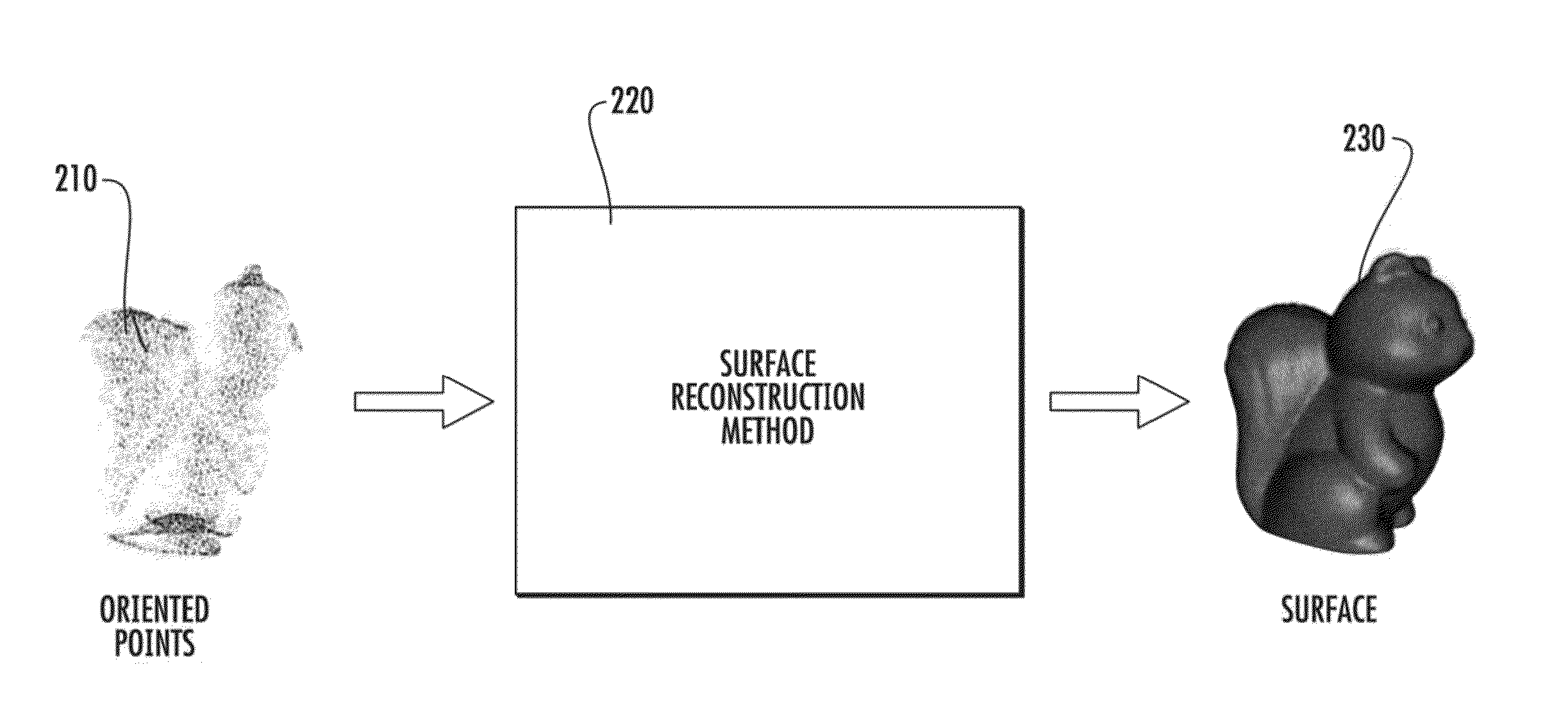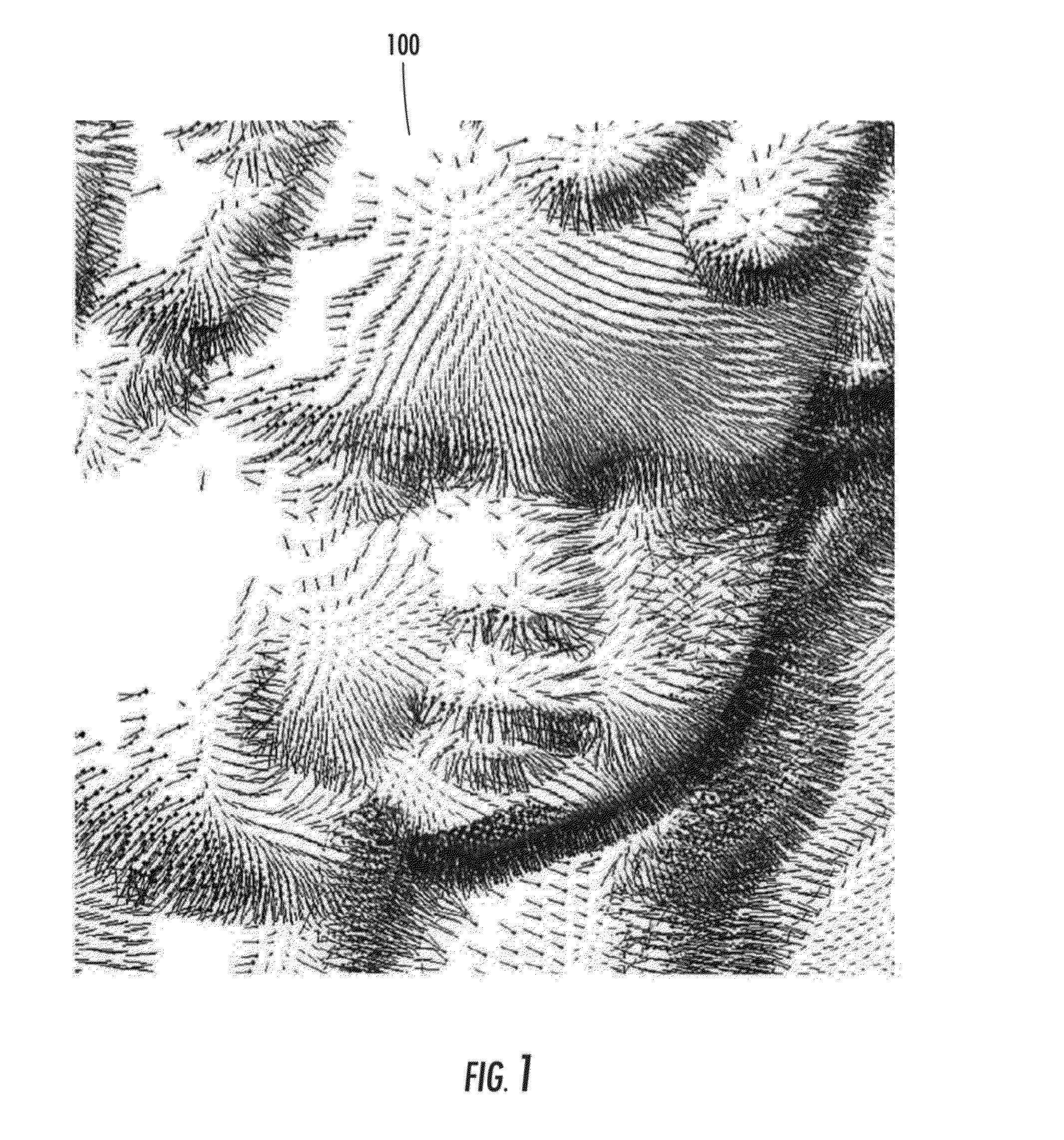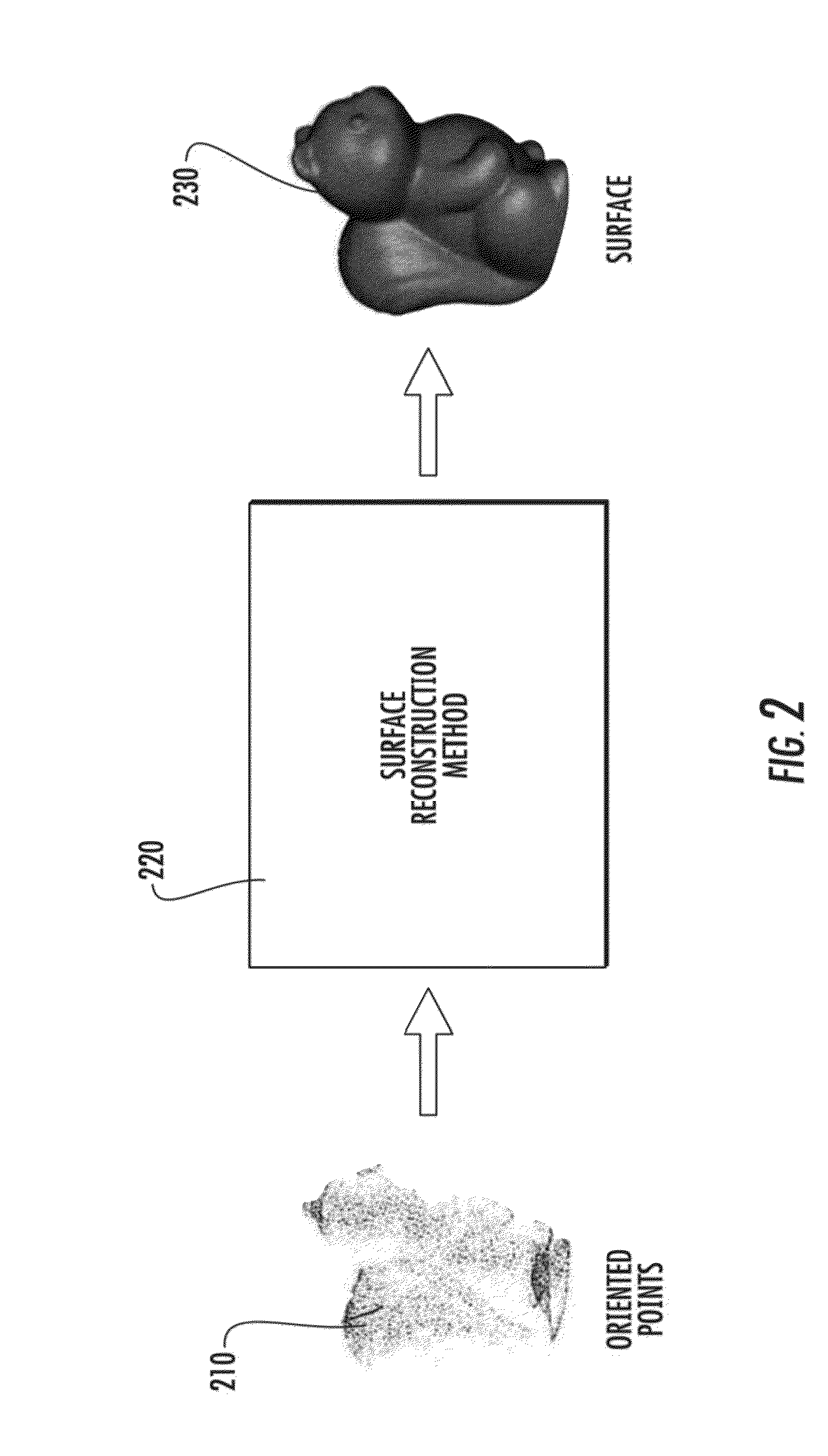Method to reconstruct a surface from oriented 3-d points
a 3-d point and surface technology, applied in the field of oriented 3-d point reconstruction, can solve the problems of not being able to capture all the points, surface does not appear to be a continuous surface, and the cost of laser 3d scanning systems is high, so as to achieve the effect of improving quality and simplifying and being easy to implemen
- Summary
- Abstract
- Description
- Claims
- Application Information
AI Technical Summary
Benefits of technology
Problems solved by technology
Method used
Image
Examples
Embodiment Construction
[0031]The present invention provides generally for a method for reconstructing a surface from a finite set of oriented points. FIG. 1 shows a finite set of oriented points 100. FIG. 2 shows a method 220 for reconstructing a surface 230 from a finite set of oriented points 210. An oriented point (p,n) comprises a point location p and a point orientation vector n. FIG. 3 shows a method 320 for 3D scanning a 3D object 310. A set of oriented points 320 is obtained using 3D scanning methods and systems 320 known and described in the art such as laser scanning systems 321, structured lighting systems 322, and multi-view stereo methods 322, as samples of the boundary surface of a 3D object 310. Sets of oriented points are also generated by other methods, such as interactive geometric modeling systems, and large-scale computer simulations.
[0032]We begin with the assumption that a set of oriented points P={(p1, n1), . . . , (pN, nN)} has already been acquired by 3D scanning the surface of a ...
PUM
 Login to View More
Login to View More Abstract
Description
Claims
Application Information
 Login to View More
Login to View More - R&D
- Intellectual Property
- Life Sciences
- Materials
- Tech Scout
- Unparalleled Data Quality
- Higher Quality Content
- 60% Fewer Hallucinations
Browse by: Latest US Patents, China's latest patents, Technical Efficacy Thesaurus, Application Domain, Technology Topic, Popular Technical Reports.
© 2025 PatSnap. All rights reserved.Legal|Privacy policy|Modern Slavery Act Transparency Statement|Sitemap|About US| Contact US: help@patsnap.com



